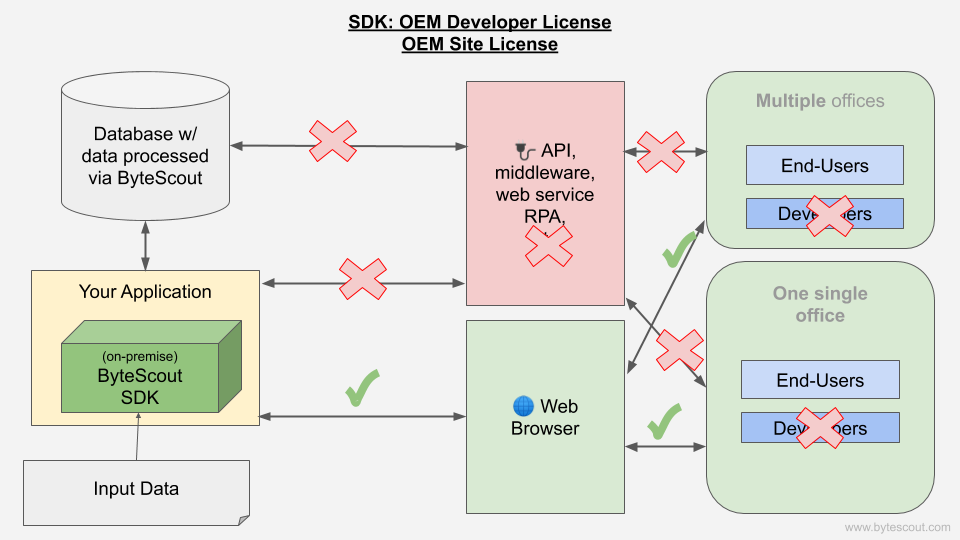

- #Different types of licenses for my code upgrade
- #Different types of licenses for my code full
- #Different types of licenses for my code software
- #Different types of licenses for my code license
Why not learn more about how barcodes can better serve you? For instance, the recent surge of 2D barcoding has proven popular by allowing you to scan straight from your smartphone for a wealth of data. Barcode technology never stops advancing. Speaking Another Language: Barcode Symbologies differ in qualities such as capacity and linearity, making some advantageous for particular uses and industries. Each symbology follows an algorithm for standardizing the encoding and storing of these characters. Rather than manually writing and copying this information, it becomes encrypted in barcode languages (symbologies) for fast transfer through a scanner to computer. These strings of characters can designate all types of information.
#Different types of licenses for my code license
They are basically a license plate that is linked to data files. Here’s an easy way to understand how barcodes work: think of them as a more technologically savvy way to transfer strings of characters.
#Different types of licenses for my code software
Further, the user may not re-use the old, superseded license.įull Rights retail licenses do not supersede a preceding license regardless of how the software is installed.Ĭolin Barnhorst Windows 7 Ultimate 圆4 on DIY with 6GB ram.Barcode Types Explaining the Different Barcode types
#Different types of licenses for my code upgrade
However, the user must own a previous Windows license qualifying for the upgrade in order to take advantage of the reduced price.
#Different types of licenses for my code full
Upgrade licenses are sold at a reduced price compared to the Full Rights license for this reason.

As a licensing right "upgrade" means that the customer is given credit (residual value) for the old Windows license because it is being superseded by the new upgrade license. Microsoft uses "upgrade" to mean both an installation methodology and a licensing right. Retail licenses may be either Upgrade licenses or Full Rights licenses. Such licenses are classified as "retail" because, unlike OEM licenses, they are transferrable to a different computer. They may not be transferred with a computer that changes ownership. Subscription and complimentary licenses are transferrable to a new computer by the subscriber/recipient only. Licenses obtained from a subscription such as MSDN, TechNet, BizSpark, and complimentary copies are not-for-resale. A retail license may be transferred to another computer so long as the number of computers licensed does not exceed the licensing limit. The term "retail" used in licensing has nothing to do with how the user purchases Windows, however, but refers to certain Product keys are what the customer gets when he buys a Full Packaged Product (FPP), commonly known as a "boxed copy", of Windows from a retail merchant or purchases Windows online from the Microsoft Store. They may, however, be transferred with the computer if the computer is transferred to new ownership. OEM keys are not-for-resale and may not be transferred to another computer. The correct license for these cases is Retail. A system builder is defined by the System Builder license as "an original equipment manufacturer, an assembler, a refurbisher, or a software pre-installer that sells the Customer System(s) to a third party." A person who builds a computer for his own use or for friends and family is not a system builder as defined by the System Builder license. System Builder, product keys are for use by smaller system builders, computer shops, consultants,Īnd others who provide computers and services to their customers. This is the key for the user to enter manually should he need to activate Windows himself. The COA SLP key is printed on a sticker affixed to the side of the computer case (desktops), or on the bottom of the case (laptops), or in the battery compartment (newer laptops). KeyFinder, cannot be used by the end user to manually activate Windows. OEM SLP keys, which the user can read in the MGADiag report or software like The OEM SLP keys self-activate if the corresponding data in the BIOS is correct. Consult your organization or the Volume Licensing Service Center for help with volume license keys.Īnd COA SLP product keys, are issued by large computer manufacturers and use SLP ( System Locked Pre-installation) technology to bind the license to the original motherboard via the BIOS and software. Volume license keys may not be transferred with the computer if the computer changes ownership. They are issued by organizations for use on client computers associated in some way with the organization. KMS Client and Volume MAK product keys, are volume license keys that are not-for-resale. Look for the two lines that are similar to: Your license type can be determined by running the MGADiag Tool and inspecting the report. This is a brief summary of the license types most often discussed in this forum. Each Windows license type confers rights and imposes restrictions on its use.


 0 kommentar(er)
0 kommentar(er)
